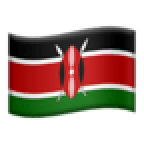For decades, vernacular music was considered regional. A Kikuyu Benga track played mostly in Central Kenya, while a Kamba tune rarely left Ukambani.
Yet certain pioneering artists managed to transcend those borders, introducing their ethnic sounds to the rest of Kenya and, in some cases, the world.
These musicians laid the foundation for today’s vernacular stars like Samidoh and Prince Indah, who can fill up venues far outside their home bases.
Tony Nyadundo and Suzanna Owiyo bring Ohangla to the mainstream
When one thinks of vernacular artists who crossed into mainstream consciousness, Tony Nyadundo easily comes to mind.
Dubbed the King of Ohangla, he is credited with commercialising and modernising the Luo drum-based Ohangla music. His hit ‘Ndoa ya Machozi’ propelled him to newer heights.
Alongside him, Suzanna Owiyo introduced a softer, more contemporary Benga-inspired sound. Her hit 'Kisumu 100' was a love letter to her hometown but struck a national chord, even winning international attention.
&format=jpeg)
Suzanna Owiyo
Other Luo artists who propelled the genre to national levels include Onyi Papa Jey, and Princess Jullie.
Today, Ohangla and Luo-inspired Benga are thriving in the hands of artists like Okello Max, Costa Ojwang, and Prince Indah, who have reinvented the sound for younger audiences and taken it to bigger stages across the country.
Kikuyu - John De Matthew, Kamande wa Kio and Mike Rua
Beyond Joseph Kamaru’s pioneering role, the Kikuyu music scene blossomed with stars like the late John De Matthew, who modernised Kikuyu Benga by weaving in contemporary issues of love, politics, and morality.
Kamande wa Kio further pushed Mugithi into urban spaces, while Mike Rua became famous for his flamboyant stage presence and bold reinventions of Mugithi, earning him the nickname ‘King of Mugithi’.
&format=jpeg)
READ ALSO: John De'Mathew's 2nd wife discusses rift with co-wife, 5 years after losing hubby
Today, Kikuyu vernacular music is at its peak with Samidoh leading the Mugithi wave nationally, joined by artists like Jose Gatutura and DJ Fatxo, who have made Kikuyu tunes staples in clubs, concerts, and even international tours.
Kamba - Kakai Kilonzo and Ken wa Maria
Ukambani gave Kenya Kakai Kilonzo, the leader of the Kilimambogo Brothers Band. Later, Ken wa Maria transformed Kamba Benga into a pan-Kenyan dance-floor genre with hits like 'Fundamentals'.
Today, Kamba music thrives in the hands of artists like Alex Kasau Katombi, Maima, and Mutulani Marcus.
Kalenjin: Kipchamba’s Foundation and Emmy Kosgei’s global touch
From the Rift Valley, Kipchamba arap Tapotuk gave Kalenjin music a poetic voice, revered for his Tugen lyrics and mastery of traditional instruments.
&format=jpeg)
Emmy Kosgei forced to defend herself over remarks she made on Kalenjin men
READ ALSO: 9 Kenyan songstresses who have maintained their vocal magic for decades
Decades later, Emmy Kosgei carried Kalenjin sounds onto the global gospel stage, blending vernacular with Afro-fusion to win international acclaim.
The song ‘Emily Chepchumba’ also became a national anthem of sorts, sung far beyond Rift Valley weddings and gatherings.
Younger Kalenjin artists have continued to diversify Kalenjin music, from gospel to party anthems, ensuring the sound appeals to both rural and urban audiences.
Inspiring music production across communities
The breakthroughs of these artists didn’t just elevate their communities’ sounds they also inspired other regions to invest more in music.
&format=jpeg)
As vernacular songs began topping national charts and filling up stadiums, musicians from smaller ethnic groups felt encouraged to record, perform, and share their cultural sounds.


&format=jpeg)
)
&format=jpeg)
&format=jpeg)
&format=jpeg)